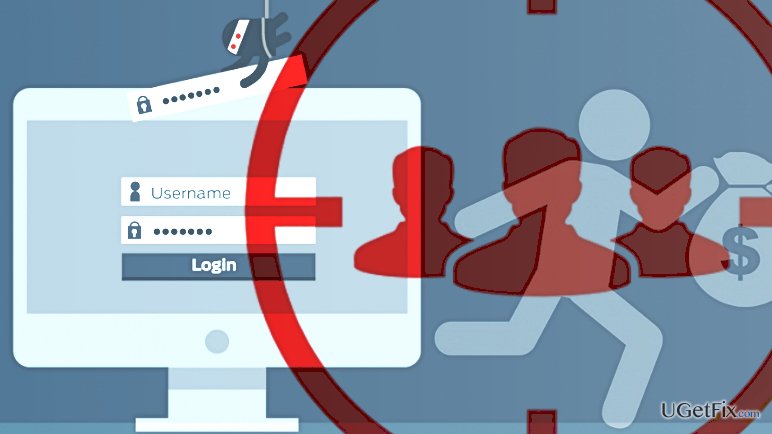
Phishing scams are on a rise in 2017
Detecting phishing scams is quite easy, although insufficient knowledge about them can lead to sad consequences such as data loss or computer infection. Phishing scams are on the rise in 2017. As the years go by, cyber criminals get more and more creative, and they improve their techniques regularly.
First of all, we must point out that scammers always compose their phishing emails using a certain theme. Be it a tax season, Black Friday or some other theme, and they will take advantage of it to scam hundreds of users worldwide.
You do not want to be tricked into installing some malicious file or providing your login details to some scammers, do you? Clearly, nobody does. For this reason, you should follow the general safe browsing rules that will help you identify and outsmart phishing scams.
Our tips will help you to identify the majority of Internet scams, but if you are looking for extremely useful tips on how to identify phishing scams, we suggest looking at this guide on how to identify an email infected with a virus on 2-Spyware site.
Be smarter than Internet scammers, or how to identify and avoid Internet scams
- Scammers tend to send a fraudulent email or text messages to potential victims. Their most favorite technique is to pretend to be someone they’re not – most frequently, well-known companies that send out mass emails to their clients. Scammers often copy text that legitimate companies use and modify it slightly. On top of that, they add company’s logos which often are low-quality (you can see actual pixels in them). If you receive a shady-looking email, do not rush to interact with its content. Search the web for information about the email and try to find out if other people received a similar message, too.
- Scammers might try to deceive you by saying that you must reset your password or renew your account and try to trick you into providing login details via a special link provided in the email. Such link typically leads to a phishing site that looks quite legitimate. However, the first thing that you want to look at is the address field. If the URL doesn’t match the original website’s URL, do not type a single letter into the provided forms. Chances are, someone is trying to scam you!
- If the message contains very little or no text or simply if it appears shady or unusual to you, do not attempt to open files attached to such mail. Do not let your curiosity kill you. If you received a questionable email that you weren’t exactly waiting for, better ignore it or just delete it.
- If you see that an email contains a link to an external site but you are unsure whether it is legitimate, hover your mouse over it and look at the bottom left corner of your screen. You should see an expanded version of the URL. If it seems suspicious (for instance, amazon-support-help-24.com instead of just amazon.com), delete such email immediately.
- If your computer unexpectedly started to display pop-up windows asking you to check your computer’s safety with “certified technicians,” it is likely that you are dealing with scammers who managed to infect your computer with an adware-type virus. Such program can induce pop-ups or banners without your knowledge. Although you can come across such phishing sites without having an adware on your system, you should always scan your computer to see if it has been infected with one.
- Question everything. Received a pop-up from Apple or Microsoft? Ask yourself whether it looks trustworthy. Someone is telling you that your account has been compromised? Change your passwords and check your system for malware, but do not call fraudsters who are likely to tell you to do the exact same thing.
- Instead of following links included in deceptive emails, visit the official page of them and perform the required task directly (for instance, if someone asked you to change your password on Amazon, better go to the original page and reset your password via it rather than relying on a deceptive link included in the email.
The reason why someone is trying to get you scammed
If you suspect that someone is trying to scam you, you probably want to know what is the purpose of those scammers. The answer is simple. The attackers simply want to get access to your computer system or to sensitive information that they could use for their illegal projects. You would be surprised to know how valuable personal information is.
Clicking on a compromised link can land you on a malicious website with an exploit kit. Exploit kits can scan your browser for software vulnerabilities and use them to infect your computer with severe malware such as Locky or Cerber.
Speaking of tech support scams and their phishing techniques, we have to say that their main purpose is either to access victim’s computer remotely to plant spying malware there or swindle money from the victim directly during the phone conversation.
If you are not a tech-savvy person, be extremely suspicious when someone asks you to do a certain task for a certain “result” that is unknown to you. We will repeat ourselves – question everything and believe in nothing – it is better to be safe than sorry.



